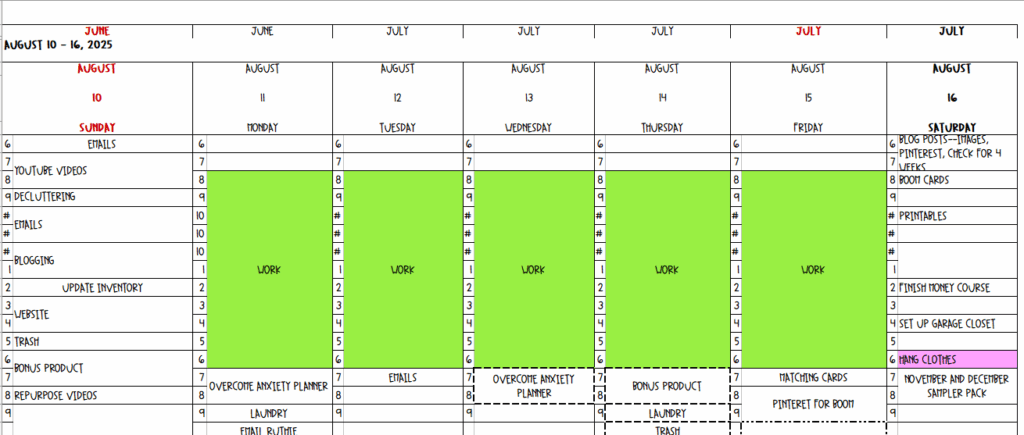Procrastination is a sneaky habit. It appears when we least need it, but we always expect it. It’s easy to procrastinate. Whether you’re looking at a blank blog post or a full laundry basket, you might think, “I’ll do it later.”” Sound familiar?

It’s a common barrier, not just to getting stuff done, but to real personal and professional growth. When we delay a task, we miss more than just work. We lose the joy of making progress and the confidence from finishing something. Also, we miss chances that come with being consistent and reliable.
But here’s the good news: procrastination isn’t a life sentence. It’s a learned behavior—and that means it can be unlearned. With the right tools, a few mindset shifts, and a little self-compassion, you can get out of the cycle. Start by figuring out why you procrastinate. It’s not just laziness. Then, learn ways to manage your time, energy, and distractions.
It won’t happen overnight, but with consistent practice, you’ll start to notice the difference. You’ll feel more in control, more productive, and dare I say it—maybe even excited to tackle your to-do list.
Ready to beat procrastination and take back your time? Let’s look at some simple steps to get started.
1. Understand Procrastination
Before you tackle procrastination, it’s important to know why it happens. Procrastination often stems from inner fears like fear of failure, perfectionism, or simply feeling overwhelmed. Studies suggest that procrastination is not a time-management issue but a mood regulation problem. People procrastinate to avoid the discomfort of starting or completing a task.
If you’d like to explore this further, check out Psychology Today’s guide on procrastination.
2. Set Clear Goals
Having clear, achievable goals makes it easier to get started. Use the SMART Goals framework: Specific, Measurable, Achievable, Relevant, and Time-bound. For example, instead of saying, “I want to organize my office,” break it down: “I will organize my desk by sorting files today from 10 AM to 11 AM.”
You can also use APPs like Todoist, an online tado list where you can set recurring tasks each day and check them off when finished. You can use it free, and identify those tasks that you tend to avoid.
Breaking large tasks down into smaller, manageable steps can also relieve the mental burden of overwhelming projects. Tackling smaller tasks one by one builds momentum and makes big tasks feel less daunting.
3. Create a Structured Schedule
A mapped-out schedule provides clarity and direction for your day. Use tools like daily planners or apps to outline your tasks. Time-blocking is especially useful—assign chunks of time to specific activities and stick to them. For instance, use the morning for focused work and the afternoon for meetings.
Consider prioritizing tasks with the Eisenhower Matrix by classifying them into four quadrants based on their urgency and importance. This method helps you focus on what matters most.
For an in-depth guide, read this article by Princeton’s McGraw Center.
4. Eliminate Distractions
Distractions, from social media to cluttered workspaces, feed procrastination. Start by identifying your most common distractions. Then, take active measures to minimize them. Turn off phone notifications while working, or use website-blocking apps if online browsing is an issue.
Another effective tip is creating a dedicated workspace. A clean and organized area boosts focus and reduces the urge to procrastinate. Small environmental tweaks can lead to significant productivity improvements.
5. Try the Pomodoro Technique
The Pomodoro Technique is a simple yet powerful tool to beat procrastination. This time-management method involves working in short, focused blocks (usually 25 minutes) followed by a 5-minute break. After completing four cycles, take a longer 15-30 minute break. This approach combines intensity with regular recovery.
Pomodoro sessions help prevent burnout and promote a sense of urgency, making it easier to stay on task. Apps like Focus Booster and TomatoTimer can help you stay consistent. I recently adapted this method to get more done.
I can spend days sitting and working on the computer, but my stamina begins to falter. I become more fatigued and was missing my old energy. So I adapted the Pomodoro method to my own system to get more done, get more active and boost enegy levels. I set my alarm–all day, to every 1 hour 15 minutes. Then when the alarm rang, I did chores around the house for 10-15 minutes. If no chores existed (they always do) I danced around the room for about 10 minutes.
The result? By the end of the day, my house was cleaner, I had actually done more than planned, I had more energy and was excited by the results.
Learn more about the science behind focused work on Forbes’ article on productivity tips.
6. Develop a Reward System
Rewarding yourself for completing tasks builds positive reinforcement. These incentives can be small, like a piece of chocolate (miniature snickers or mini reeses peanut butter cups) after finishing your emails, or bigger, like watching a favorite show after completing a major deadline.
By associating rewards with productivity, you can train your brain to crave the satisfaction that follows. This creates a cycle of motivation and accomplishment.
Word of warning, make sure your rewards do not sabatoge other goals you are working on. For example: I have digestive issues and cannot eat certain things. However, in my mind, using them as ‘rewards’ was ok since it happened infrequently and not daily. I have learned my lesson (most of the time 😂).
7. Stay Accountable
Accountability can push you to get started when motivation runs low. Share your goals with a friend or family member and ask them to check in with you. If you’d rather not involve others, join an online community where members motivate and track each other’s progress.
Using apps like Habitica or tools like shared calendars can also keep you on track. Tracking your progress daily ensures you’re being honest with yourself. I use my old standby, an excel spreadsheet with the plans on each day. Easy to log, easy to track and my mainstay for several years now. Yes, I love todoist as well, but this excel system is easy to use, requires no log in and easy to update and track over time.

Breaking the cycle of procrastination requires consistent effort and attention. By understanding its root causes and implementing the strategies above, you can train yourself to act rather than avoid. Experiment with these techniques to find the combination that suits your lifestyle and productivity goals. The key is to start small and stay consistent.
Do you have tips or experiences overcoming procrastination? Share them below, I am always looking for more tips to help me keep on track. I have been told by people I work with that I get more done in a day than 10 other people. However, I know what my triggers are and stay accountable.
